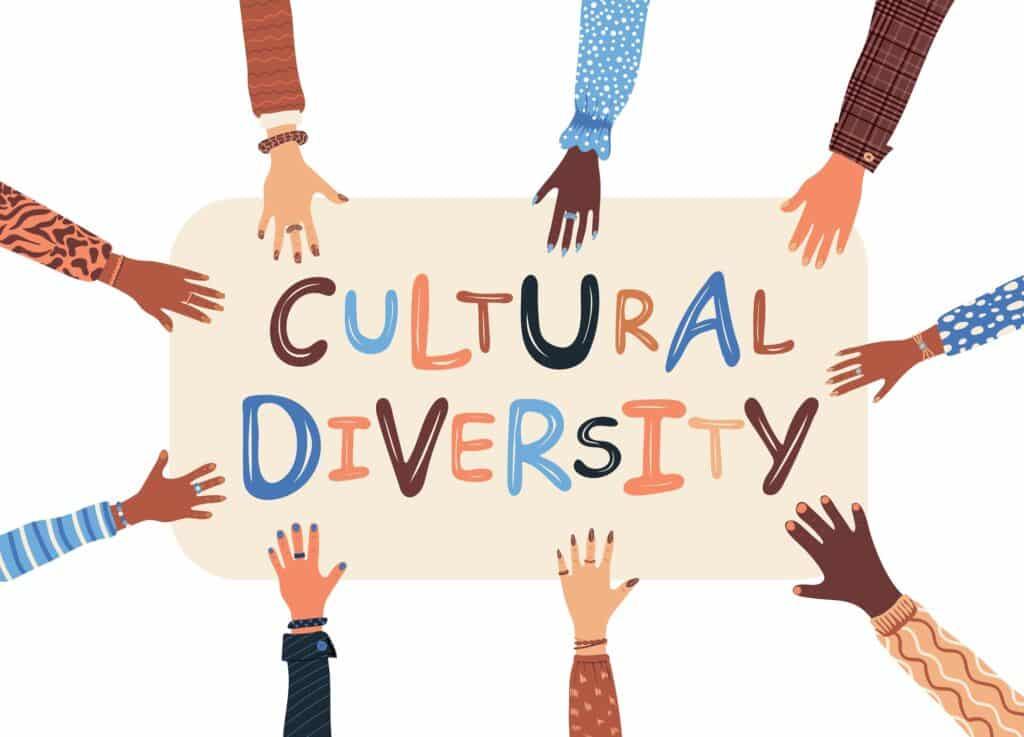In today’s interconnected world, cultural diversity is more than just a concept; it’s an opportunity. From classrooms in urban cities to remote rural schools, the presence of diverse cultural backgrounds among students is transforming the way we think about learning and education. Embracing cultural diversity in education does not only enhance the student experience, but it also enriches the entire educational system, making it more inclusive, adaptable, and future-ready.

But how can we leverage cultural diversity to strengthen and develop the education system? This article explores how educational institutions can turn diversity into a powerful tool for improving teaching methods, fostering creativity, and preparing students for global citizenship.
Creating an Inclusive Learning Environment
One of the most important ways to benefit from cultural diversity in education is by creating an inclusive environment where every student feels valued and understood. When students from different cultural backgrounds are welcomed and supported, they are more likely to thrive academically and socially.
Teachers and administrators can work together to develop strategies that celebrate and respect cultural differences. This might involve incorporating diverse cultural perspectives into the curriculum, offering professional development for teachers on cultural competency, and ensuring that school policies promote inclusivity. For example, acknowledging and celebrating various cultural holidays, traditions, and customs in the classroom can make students feel recognized and valued, which can boost their confidence and participation.
An inclusive environment goes beyond just respecting differences; it fosters empathy and mutual understanding, which is key to promoting a sense of belonging for all students. When students see that their culture is honored, they are more likely to engage in the learning process and contribute their unique perspectives.
Enriching the Curriculum with Diverse Perspectives
One of the greatest advantages of cultural diversity is the opportunity to incorporate a variety of perspectives into the educational content. When a curriculum includes diverse viewpoints and reflects the experiences of different cultural groups, it enhances students’ understanding of the world around them.
For example, history lessons can be enriched by teaching about the contributions of various civilizations, while literature can feature stories from authors from different cultural backgrounds. This not only broadens students’ knowledge but also helps them appreciate the value of cultural exchange and global interconnectedness.
Students exposed to a diverse curriculum are more likely to develop critical thinking skills and a deeper appreciation for different perspectives. This prepares them to think creatively and make informed decisions in an increasingly globalized world. In addition, integrating culturally relevant content can help students from underrepresented communities see themselves reflected in the learning process, which is essential for their academic engagement and success.
Promoting Collaboration and Cross-Cultural Communication
When students from diverse cultural backgrounds collaborate, they learn not only about the subject matter but also about each other’s unique ways of thinking and problem-solving. Working in diverse teams can help students develop essential life skills, such as effective communication, collaboration, and adaptability.

Group projects, discussions, and peer learning activities encourage students to share their cultural experiences and viewpoints, fostering an environment of mutual respect and learning. This cross-cultural communication can lead to more creative solutions to problems, as students draw from a variety of cultural traditions and knowledge systems.
Moreover, these experiences prepare students to work effectively in multicultural teams, which is a critical skill in today’s global job market. Whether in business, science, technology, or the arts, employers are increasingly seeking individuals who can collaborate across cultural boundaries and navigate diverse work environments.
Enhancing Creativity and Innovation
Cultural diversity is a catalyst for creativity. When students from different cultural backgrounds work together, they bring a unique set of ideas, approaches, and problem-solving methods to the table. This diversity of thought can spark innovation and lead to more creative solutions.
In the classroom, teachers can encourage students to use their cultural backgrounds as a source of inspiration. For example, a student from a particular culture may bring a new perspective to a history lesson, or a student from a different background might introduce unique ideas during a science project. Encouraging this kind of creative exchange not only enriches the learning experience but also prepares students to think outside the box.
By incorporating diverse perspectives into problem-solving and project-based learning, schools can cultivate a more innovative mindset in students. This is especially important as we move into a future where creativity and innovation will be essential for tackling the complex global challenges we face.
Preparing Students for Global Citizenship
As the world becomes more interconnected, it is essential for students to develop the skills and knowledge necessary to be effective global citizens. Cultural diversity in education provides students with the tools to understand and engage with people from different parts of the world, fostering a sense of shared humanity and responsibility.
In a diverse classroom, students learn to appreciate the complexities of global issues, such as climate change, inequality, and human rights. By understanding the cultural, social, and economic contexts of these issues, students are better equipped to contribute to meaningful solutions.
Moreover, exposure to different cultures enhances students’ emotional intelligence, helping them navigate cultural differences with respect and empathy. This prepares them to work and collaborate in international settings, whether in the workplace or as part of social and community initiatives. Developing global citizenship helps students not only succeed in a diverse world but also contribute positively to the communities they live in.
Empowering Educators and Students
For cultural diversity to truly benefit the education system, teachers must be empowered with the tools, knowledge, and resources to teach in diverse classrooms effectively. Professional development opportunities that focus on cultural competency and inclusive teaching strategies are essential for educators to understand the needs and challenges of students from various cultural backgrounds.

By equipping teachers with the right skills and knowledge, we can create a more inclusive and supportive educational environment. Teachers who understand the value of diversity are better able to adapt their teaching methods to meet the needs of all students, regardless of their background.
At the same time, students must be encouraged to take an active role in their own learning by engaging with diverse perspectives and questioning assumptions. Empowering students to explore their own identities and learn about the cultures around them fosters a sense of self-confidence and respect for others.
Conclusion
Cultural diversity is one of the greatest assets in education today. By embracing and celebrating this diversity, we can create a more inclusive, innovative, and globally aware education system. From enriching the curriculum with diverse perspectives to promoting collaboration and cross-cultural communication, the benefits of cultural diversity are endless. As we prepare students for a future that is increasingly interconnected, fostering an environment that values and nurtures diversity is essential for building a strong, resilient, and future-ready education system.
Harnessing the power of cultural diversity doesn’t just improve education—it transforms it. By creating learning environments that reflect the world’s rich variety of cultures, we give students the opportunity to become not just knowledgeable individuals, but compassionate global citizens, ready to face the challenges of tomorrow.